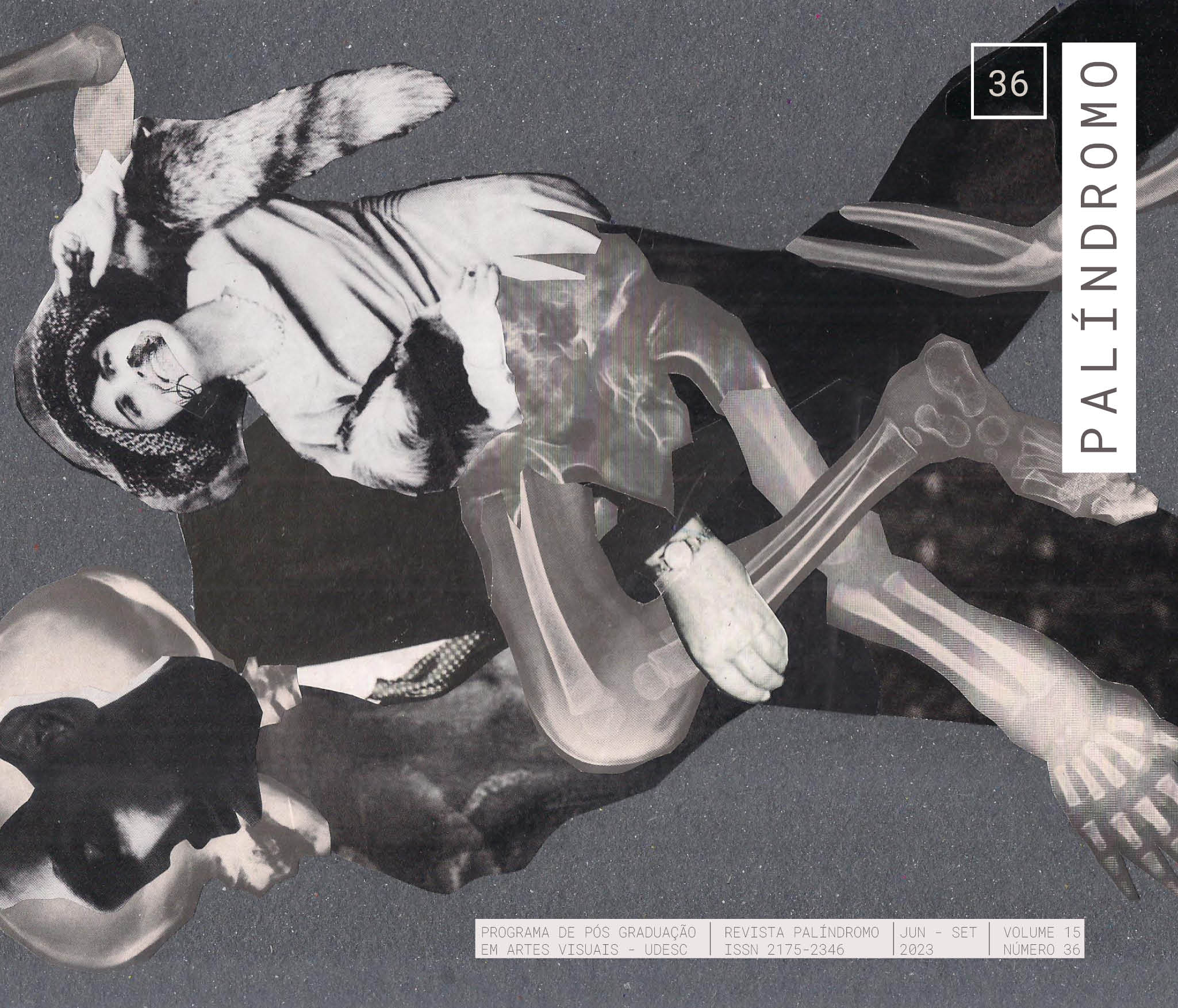Raymundo Colares e o cinema: dos gibis aos filmes em super-8
DOI :
https://doi.org/10.5965/2175234615362023e0011Mots-clés :
Raymundo Colares, filmes de artista, gibi, super-8Résumé
A desarticulação de estruturas visuais é uma das principais questões que Raymundo Colares desenvolve em seu percurso poético. Este artigo busca responder qual é a relação de proximidade que seus trabalhos suscitam com a ideia de sensação do movimento da imagem, princípio fundamental do cinema. Para isso, analisa a série de trabalho que o artista denomina de Gibi e os relaciona com a técnica de montagem cinematográfica. Em um segundo momento, o texto reflete sobre os três filmes que Colares realizou, buscando demostrar como esses trabalhos fazem parte dessa sua pesquisa de desarticulação visual, e podem ser vistos como uma forma de pintura em movimento.
Téléchargements
Références
ALBERA, François. Eisenstein e o construtivismo russo: A dramaturgia da forma em “Stuttgart”. São Paulo: Cosac & Naify, 2002.
AMARAL, Aracy; CRUZ, Roberto Moreira S. Expoprojeção: 1973-2013. São Paulo: Sesc Pinheiros, 2013.
ARRIGUCCI JR., Davi. Misteriosa entrega e mudança de si mesmo. Revista Piauí, Rio de Janeiro, n. 58, jul. 2011. Disponível em: https://piaui.folha.uol.com.br/materia/misteriosa-entrega-e-mudanca-de-si-mesmo/. Acesso em: 25 maio 2023.
BERGSON, Henri. O pensamento e o movente. São Paulo: Martins Fontes, 2006.
BOIS, Yve-Alain. A pintura como modelo. São Paulo: Editora WMF Martins Fontes, 2009.
CADÔR, Amir. Os Gibis de Raymundo Colares. In: CAMILLO OSORIO, Luiz. Raymundo Colares. São Paulo: Museu de Arte Moderna de São Paulo, 2010.
CAMILLO OSORIO, Luiz. Raymundo Colares. São Paulo: Museu de Arte Moderna de São Paulo, 2010.
COLARES, Raymundo. [Correspondência]. Destinatário: Antonio Manuel. Milão, 23 out. 1972. 1 carta.
DELEUZE, Gilles. Conversações. São Paulo. Ed. 34, 1992.
EISENSTEIN, Serguei. O sentido do filme. Rio de Janeiro: Jorge Zahar, 2002.
GIDAL, Peter. Theory and definition of structural/materialist film. In: GIDAL, Peter (ed.). Structural Film Anthology. London: British Film Institute, 1976.
GOIDANICH, Hiron Cardoso. Enciclopédia dos quadrinhos. Porto Alegre: L&PM, 2001.
MAURICIO, Jayme. Colares: o ônibus e as barreiras a vencer. Correio da manhã, Rio de Janeiro, n. 23430, 3 set. 1969. Segundo Caderno, p. 1.
MITCHELL, William J. T. "Ut Pictura Theoria”: Abstract painting and the repression of language. Critical Inquiry, v. 15, n. 2, p. 348-371, 1989. Disponível em: https://doi.org/10.1086/448488. Acesso em: 25 maio 2023. DOI: https://doi.org/10.1086/448488
MORAIS, Frederico. Na estrada: o ônibus e o barranco. Diário de Notícias, Rio de Janeiro, n. 14346, 16 ago. 1969. 2a Seção, p. 3.
MORAIS, Frederico. Colares: gigantismo e impasse. Diário de Notícias, Rio de Janeiro, n. 14351, 22 ago. 1969. 2a Seção, p. 3.
MICHAUD, Philippe-Alain. Filme: por uma teoria expandida do cinema. Rio de Janeiro: Contraponto, 2014.
OITICICA, Hélio. Colares. In: NETO, Torquato; SAILORMOON, Waly (org.) Navilouca. Rio de Janeiro, 1972.
PAPE, Lygia. Lygia Pape: entrevista a Lúcia Carneiro e Ileana Pradilla. Rio de Janeiro: Nova Aguilar, 1998.
PONTUAL, Roberto. O Hoje do ontem neoconcreto. In: PUCU, Izabela; MEDEIROS, Jaqueline (org.). Roberto Pontual: obra crítica. Rio de Janeiro: Beco do Azougue, 2013. p. 383-388.
RODRIGEZ, Gloria. Notas da tradução. In: CORTÁZAR, Júlio. Histórias de cronópios e de famas. Rio de Janeiro: Civilização Brasileira, 2007.
VENANCIO FILHO, Paulo. Pintura e caos. In: VENANCIO FILHO, Paulo. A presença da arte: Paulo Venancio Filho. São Paulo: Cosac Naify, 2013.
Téléchargements
Publiée
Comment citer
Numéro
Rubrique
Licence
(c) Tous droits réservés Mario Caillaux, Marcelo Mari 2023

Ce travail est disponible sous la licence Creative Commons Attribution 4.0 International .
DECLARAÇÃO DE DIREITOS AUTORAIS
a. Os artigos publicados pela revista são de uso gratuito, destinados a aplicações acadêmicas e não comerciais. Todos os direitos autorais são atribuídos à revista. Os artigos cujos autores são identificados representam a expressão do ponto de vista de seus autores e não a posição oficial da Revista Palíndromo. O (s) autor (es) compromete-se sempre que publicar material referente ao artigo publicado no Palíndromo mencionar esta publicação da seguinte forma:
Este artigo foi publicado originalmente pela revista Palíndromo em seu volume (coloque o volume), número (coloque o número) no ano de (coloque o ano) e pode ser acessado em: http://www.revistas.udesc.br/index.php/palindromo
b. Plágio, em todas as suas formas, constitui um comportamento antiético de publicação e é inaceitável. A revista Palíndromo utiliza o software iThenticate de controle de similaridade


